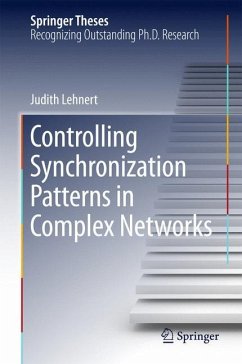
Triangulation, Modelling and Controlling Dynamical Systems
Theory and Applications
Versandkostenfrei!
Versandfertig in 6-10 Tagen
32,99 €
inkl. MwSt.

PAYBACK Punkte
16 °P sammeln!
Chaos attracted attention of scientists for centuriesbut not until recently we started to understand it. We encounterchaotic systems in our everyday lives, from washing machines to thestock market. They seem to be random but in fact they are dynamicalsystems very sensitive to changes. This book describes atriangulation method to study and to model dynamical systems derived fromobserved data. The idea of the triangulation method is to constructa 'net' of simplices, geometrical objects like triangles andtetrahedra that connect data points. This natural grid is then usedto approximate an unknown ...
Chaos attracted attention of scientists for centuries
but not until
recently we started to understand it. We encounter
chaotic systems in
our everyday lives, from washing machines to the
stock market. They
seem to be random but in fact they are dynamical
systems very
sensitive to changes. This book describes a
triangulation method to
study and to model dynamical systems derived from
observed data.
The idea of the triangulation method is to construct
a 'net' of
simplices, geometrical objects like triangles andtetrahedra that
connect data points. This natural grid is then used
to approximate an
unknown system by a piecewise linear interpolation.
Within this
simplicial framework it is shown how to find a fixed
point of the
interpolated system. Examples with a computer
software illustrate how
to reconstruct control a dynamical system in a
neighbourhood of its
fixed point.
but not until
recently we started to understand it. We encounter
chaotic systems in
our everyday lives, from washing machines to the
stock market. They
seem to be random but in fact they are dynamical
systems very
sensitive to changes. This book describes a
triangulation method to
study and to model dynamical systems derived from
observed data.
The idea of the triangulation method is to construct
a 'net' of
simplices, geometrical objects like triangles andtetrahedra that
connect data points. This natural grid is then used
to approximate an
unknown system by a piecewise linear interpolation.
Within this
simplicial framework it is shown how to find a fixed
point of the
interpolated system. Examples with a computer
software illustrate how
to reconstruct control a dynamical system in a
neighbourhood of its
fixed point.












